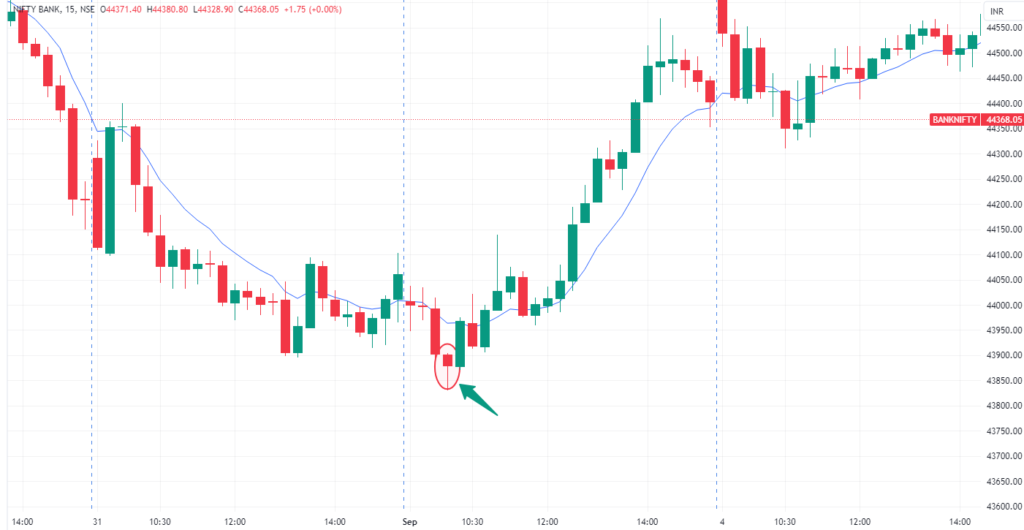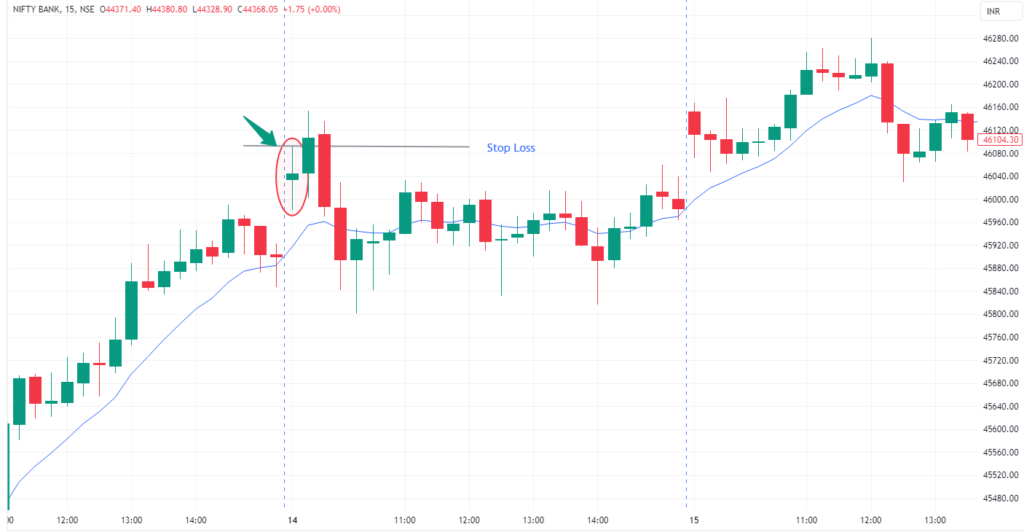In this “Intraday trading strategies: No 5”, we will discuss 9 EMA Retracement Strategy. This we can apply when we can expect prices to go up or down basis setup
Concept
- If the prices are above Moving Average, then it is assumed that market is Bullish and if it is below Moving Average, then market is Bearish.
- When prices move far above or below the Moving Average, then deviation happens in prices. It is observed that prices will sooner or later move back to Moving Average.
- As we are using 9 EMA in this strategy, so we will wait for deviation in prices along with bearish or bullish candlestick pattern as a second signal to enter. Candlesticks provides market sentiment information to a trader like when the market is bullish, bearish or if there are chances of reversal. These bullish and bearish candlestick patterns are helpful to a trader along with the knowledge of support and resistance.
9 EMA Retracement Trading Strategy
Entry rule
Step 1: There should be a deviation in prices. This means either prices should move far above 9 ema or far below 9 ema.
Step 2: Now we will wait for Doji or hammer candle formation which signals possible reversal.
Step 3 : After doji or hammer candle formation , calculate the range of candle . Range is high price – low prices of the candle . The distance between doji/hammer candle ( we will take closing price here) and 9 EMA line should be greater or equal to range of the candle to take the trade. This means that there should be good deviation in prices so that if price go back to moving average , a trader can take a good profit.

Step 4: Take the trade at close of the candle


Exit rule
Step 1 : Take first profit at risk reward of 1. This means around 100 spot points movement in BANK NIFTY and 50 spot points movement in NIFTY
Step 2 : Take second profit at risk reward of 2 or you can trail the profit.
Note : Trailing stop loss require expertise in market
Stop Loss
Stop loss can be kept at entry candle high in case you have buy a PUT OPTION and entry candle low in case of you have buy a CALL OPTION.
Stocksgully tip
Based on volatility in the market , BANKNIFTY SL can be kept at 100 points on spot price and NIFTY SL can be kept at 50 points on spot price. Sometimes the entry candle range will be like 30-40 points ( In case of BANKNIFTY ) and if you put SL at high of the candle , volatility might hit your SL even if setup is correct and later it gives a good profit.
Important points to consider basis this setup
- Once setup is formed , check whether it is also the high of last 3 – 4 days in case deviation happens above 9 EMA and low of last 3-4 days in case deviation happens below 9 EMA . The probability of trade increases in these cases.
- Buy ATM call in this setup.
Backtesting
Always backtest the strategy before taking actual trades in market . The strategy should suit your trading style and psychology.
Any opinions, news, research, analyses, prices, or other information contained on this website is provided as general market commentary for educational purpose only and does not constitute investment advice. StocksGully will not accept liability for any loss or damage including, without limitation, to any loss of profit which may arise directly or indirectly from use of or reliance on such information.

